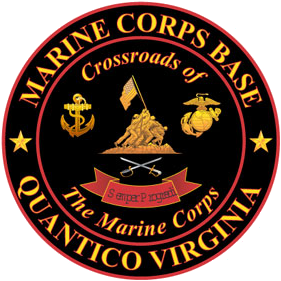Michael E. Haskew
Marine Corps Base Quantico
Perhaps the best known permanent facility operated by the United States Marine Corps is Marine Corps Base Quantico, located in northern Virginia near Washington, D.C. Established as Marine Barracks Quantico in the spring of 1917, the facility served as a training base for thousands of Marines during World War I. In response to the growing prospects of a war in the Pacific during the 1920s, Quantico became a center for the development of the equipment and tactics needed to prosecute such a conflict.

Initially conceived as shipboard infantry that would find among their primary tasks the maintenance of security between officers and crewmen —effectively a deterrent to mutiny— and the armed contingent that would board an enemy vessel in close combat, the Marines were also to be capable of fighting on land.
During its history, the Marine Corps has deployed to hot-spots around the world, from Latin America to Southeast Asia, and from the Mediterranean coast of Africa to the continent of Europe. Its sternest test, however, occurred during World War II as the Marines served as the primary ground force during the offensive that traversed the Central and South Pacific through a series of bloody encounters against determined Japanese defenders, carrying the fight to the very doorstep of the Home Islands.
Marine officers based at Quantico were largely responsible for the development of Marine amphibious warfare doctrine during the years between the world wars. Equipment was designed and tested there, while direct assault tactics were perfected and close air support techniques were refined. More than 15,000 officers received training in amphibious warfare at Quantico during the period.
Concurrent with the establishment of the Fleet Marine Force in 1933, officers stationed at Quantico organized the emerging Marine Corps amphibious doctrine into a publication titled Tentative Manual for Landing Operations. All aspects of amphibious assault were addressed, including logistics, air support, naval fire support, and the functionality of the beachhead.
In 1938, the initial document was adopted as Fleet Training Publication 167, and it became the template for all Marine Corps amphibious operations conducted during World War II. Quantico served as headquarters for the Fleet Marine Force until 1941, and with its departure the base embarked on a future devoted to the training of individual Marines. Today, Marine Corps Base Quantico is home to numerous commands and schools that provide educational experiences to enhance the career paths of Marine personnel.
Michael E. Haskew is the editor of WWII History Magazine and the former editor of World War II Magazine . He is the author of a number of books, including THE MARINES IN WORLD WAR II. The Sniper at War and Order of Battle. Haskew is also the editor of The World War II Desk Reference with the Eisenhower Center for American Studies. He lives in Hixson, Tennessee.
